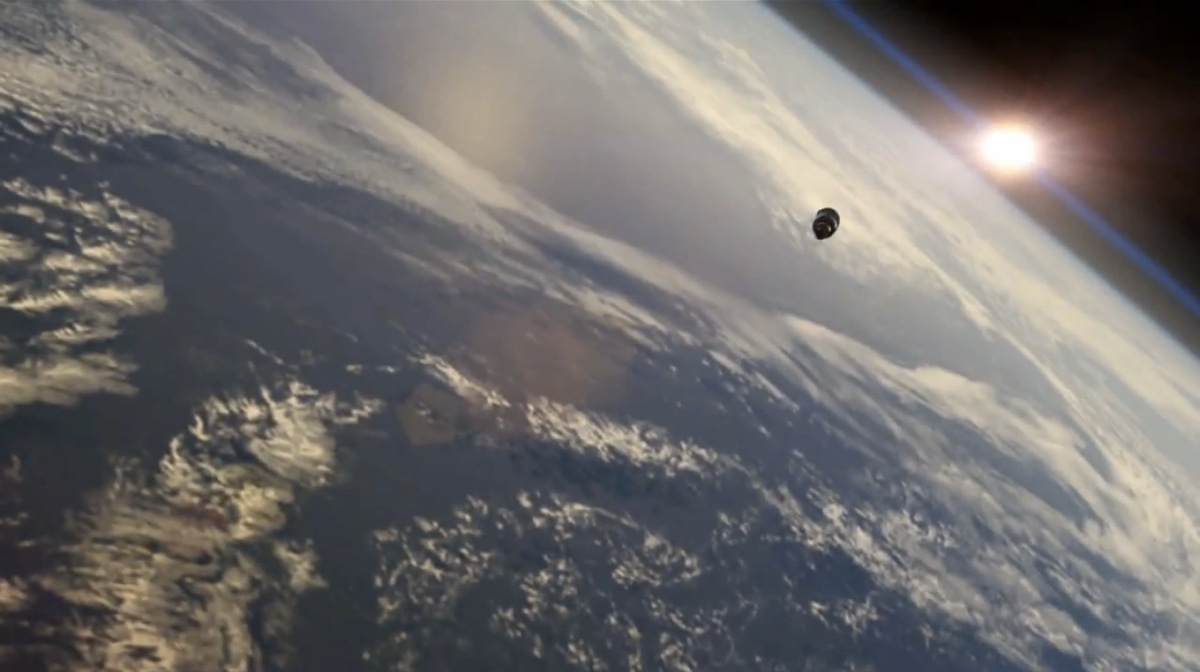How NASA's 1st Orion Spaceship Test Flight Will Work (Video)

NASA's newest crewed spaceship will launch in December on a first-ever test flight that will take it thousands of miles away from Earth and through temperatures twice that of molten lava.
The unmanned mission, known as Exploration Flight Test-1 (EFT-1), is designed to test out NASA's Orion spacecraft ahead of future crewed missions to far-flung destinations such as asteroids and Mars. And a new NASA video about EFT-1 takes viewers through the highly anticipated first flight, step by step.
If all goes according to plan, Orion will launch atop a Delta IV Heavy rocket from Florida's Cape Canaveral Air Force Station on Dec. 4. The capsule will jettison from the rocket and take a lap around Earth about 100 miles (160 kilometers) above the surface, hurtling along at 17,000 mph (27,360 km/h). Then, it will prepare to break away from Earth's orbit. [Photos: NASA's Orion Space Capsule Test Flight]
"Like the setup for a roller-coaster ride, this is the big climb we've been waiting for," NASA engineer Kelly Smith said in the video.
Orion will climb 3,600 miles (5,794 km) above the surface — 15 times higher than the International Space Station orbiting Earth.
Once it breaks away from Earth, the Orion capsule will pass through the Van Allen Belts, huge swaths of radiation that could wreak havoc on a spacecraft's electronic equipment. The data Orion collects when passing through the belts will help engineers design shielding that can safeguard the craft during future human missions, Smith said.
On the trip back to Earth, Orion will separate from the Delta IV's upper stage and orient itself for atmospheric re-entry.
Breaking space news, the latest updates on rocket launches, skywatching events and more!
"No matter what happens now, we're coming in," Smith said.
During its descent, the Orion capsule will hurtle toward Earth so fast that the air particles it pushes out of its way will heat up, generating a balloon of hot plasma around the spaceship. Orion has the largest heat shield ever built for a spacecraft to handle the searing temperatures, which will reach 4,000 degrees Fahrenheit (2,204 degrees Celsius).
This is one of the most dangerous parts of the flight, Smith said, especially since mission control will briefly lose contact with Orion when the plasma envelope blocks communication signals.
Orion is designed to splash down softly in the ocean. First, two parachutes will deploy to slow the spacecraft to about 175 mph (282 km/h). Then, three main parachutes that span the length of a football field will deploy to slow Orion further, down to about 20 mph (32 km/h).
"And then, splashdown," Smith said.
At the end of EFT-1, Orion will land in the Pacific Ocean, and NASA engineers will then sort through all the data from the flight to continue getting Orion on track to eventually start flying humans into space.
Follow Kelly Dickerson on Twitter. Follow us @Spacedotcom, Facebook or Google+. Originally published on Space.com.

Kelly Dickerson is a staff writer for Live Science and Space.com. She regularly writes about physics, astronomy and environmental issues, as well as general science topics. Kelly is working on a Master of Arts degree at the City University of New York Graduate School of Journalism, and has a Bachelor of Science degree and Bachelor of Arts degree from Berry College. Kelly was a competitive swimmer for 13 years, and dabbles in skimboarding and long-distance running.
